Pololu Blog »
Pololu Blog (Page 72)
Welcome to the Pololu Blog, where we provide updates about what we and our customers are doing and thinking about. This blog used to be Pololu president Jan Malášek’s Engage Your Brain blog; you can view just those posts here.
Popular tags: community projects new products raspberry pi arduino more…
Flipbot: A Wixel-powered RC robot
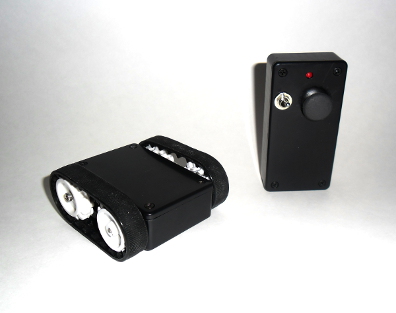 |
Geoff from Tabletop Robotics wrote a tutorial on how to build a Flipbot, a basic differential-drive robot that can keep on going even when flipped upside-down. A Wixel serves as the brains of the robot, and a second Wixel in the remote allows the Flipbot to be wirelessly controlled. In addition to the Wixels, the Flipbot uses a number of Pololu products, including:
- Two micro metal gearmotors
- 22T track set
- DRV8833 dual motor driver carrier
- MMA7361L 3-axis accelerometer
The accelerometer is used to determine when the robot is upside-down. Geoff’s tutorial has a full parts list and a diagram of how everything is connected; the complete source code is also available.
PiBot-B: mobile robot with a Raspberry Pi
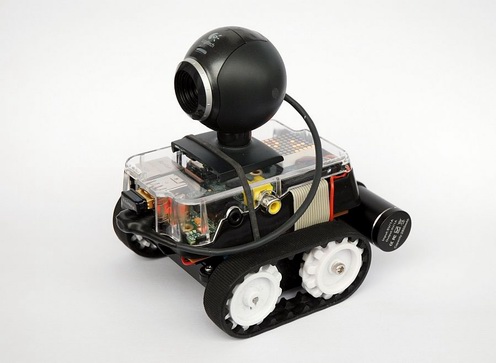 |
Thomas Schoch, of Essen, Germany, built a neat robot with a Raspberry Pi and a Zumo Chassis Kit. The PiBot-B is controlled by a custom iPhone app that communicates over WiFi to the Raspberry Pi, which is running lighttpd and PHP. A Python program uses the WiringPi library to send signals to an L293D motor driver that drives the two 100:1 Micro Metal Gearmotors in the Zumo chassis. The iPhone app displays video from the attached Logitech C300 webcam, and the robot has an integrated 8×8 LED matrix from Adafruit that indicates its state. In the future, Thomas plans to add sensors for obstacle detection and make the robot autonomous. We were impressed by several things:
- PiBot-B is very tidy, thanks in part to the USB cables that were shortened and modified using liquid rubber.
- The Raspberry Pi has only one PWM output so Thomas used two OR gates to select whether the left motor, right motor, or both motors receive the PWM signal.
- The write-up has some great photos and informative diagrams.
The PiBot-B page is written in German, but it has a link at the top to translate it into English using Google Translate.
LED strips: easy to use and now more affordable
We are giving you one more reason to take your holiday decorations this year to the next level: we have lowered the prices on our LED strips!
 |
Our 30-LED, 1 m strip has dropped from $34.95 to $24.95.
 |
Our 60-LED, 2 m strip has dropped from $69.95 to $47.95.
 |
Our 150-LED, 5 m strip has dropped from $149.95 to $119.95.
And if you are thinking custom lighting seems a little complicated, you will be surprised how easy it is to get these strips up and running with an Arduino. I show you how in this video where I am using the examples included in our Arduino library for addressable RGB LED strips to get started.
Clusterbot, a beginner robotics project tutorial
 |
Lonnie Honeycutt made a nice tutorial on how to make a simple beginner robot that uses many parts that you can find on our website. The tutorial breaks down the construction of the robot into different parts and includes videos that help demonstrate how to build the robot. It also includes links to some of our products used in the robot, like the TB6612FNG Dual Motor Driver Carrier, Pololu Robot Chassis, and the Tamiya 70097 Twin-Motor Gearbox Kit. Check it out if you are looking for a project to get you started.
Here are links to three parts of the tutorial he has posted so far:
Part 1: Arduino robotics – motor control
Part 2: Arduino robotics – chassis, locomotion and power
Part 3: Arduino robotics – wiring, coding, and a test run
WALL-E controlled by a Maestro
Forum user robo_proyect modified a WALL-E toy with a Micro Maestro 6-Channel USB Servo Controller for his first robotics project. Visit his blog (in Spanish) for more information on this and his other projects.
Featured link: http://forum.pololu.com/viewtopic.php?f=2&t=7435
Free Elektor magazine October 2013
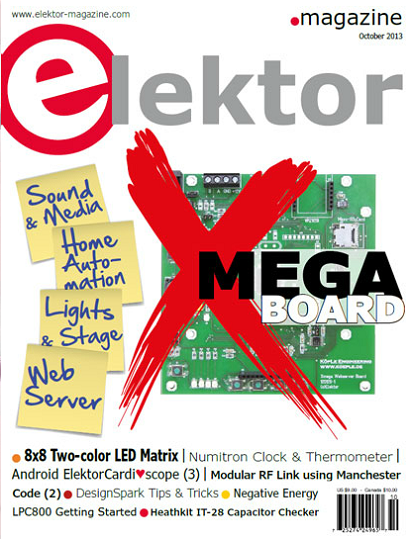 |
Get a FREE copy of Elektor magazine’s October issue with your order while supplies last. This offer is only available for orders shipped to USA or Canada. To get your free issue, enter the coupon code ELEKTOR1013 into your shopping cart. The magazine will add 6 ounces to the package weight when calculating your shipping options.
For other issues and more information, see our Free Elektor Magazine Offers page.
New product: RC Switch with Medium Low-Side MOSFET
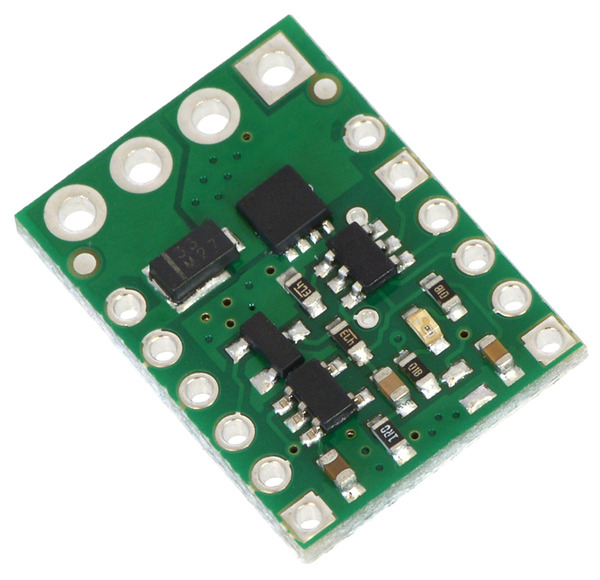 |
Last week we announced the Pololu RC Switch with Relay, the first product in our overhaul of the RC Switch family. Today we released the second new RC Switch product, the Pololu RC Switch with Medium Low-Side MOSFET. This board converts hobby radio control pulses to digital on/off signals and has an integrated medium, low-side MOSFET that allows it to drive moderate loads (up to around 15 A), such as lighting or small actuators.
This product replaces item #1211 and includes valuable new features such as a safe-start mode and user-configurable input direction and threshold.
For more information about the Pololu RC Switch with Medium Low-Side MOSFET, see the product page.
Related posts:
- Our RC Switch overhaul is complete
- New product: 4-Channel RC Servo Multiplexer
- New product: Pololu RC Switch with Relay
Zumo Robot with Pololu Plug-in Modules
 |
Forum user Erich created a custom Zumo Robot Chassis PCB to use with our Zumo chassis kit. The board is designed to accept a large number of plug-in modules, such as a DRV8835 dual motor driver carrier, encoders, and voltage regulators. Sensors that can be mounted on the robot include a Zumo reflectance sensor array, some distance sensors, and an ultrasonic sensor, and it also supports several wireless communication modules. Instead of an Arduino, it uses a Freescale FRDM-KL25Z as the microcontroller board.
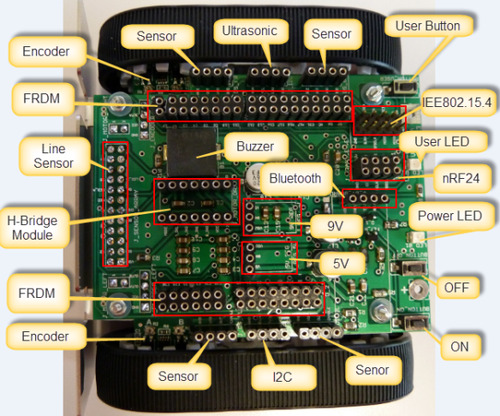 |
You can follow his robot’s progression by visiting these forum posts:
March 2013: Zumo Robot with FRDM-KL25Z Board
September 2013: Zumo Robot with Pololu Plug-in Modules
October 2013: Zumo Robot with Pololu Plug-in Modules, assembled.
New product: Pololu RC Switch with Relay
 |
We are overhauling our RC Switch family of products, starting with a new and long-awaited addition, the Pololu RC Switch with Relay. This RC relay board makes it easy to control large loads within radio control (RC) systems. Here is an example setup with a typical RC receiver controlling the switch:
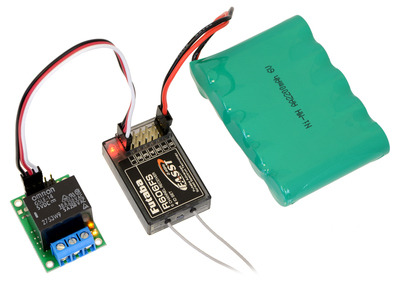 |
The Pololu RC Switch with Relay has advanced features not present in earlier RC switch products, including a safe-start mode and configurable input direction and threshold.
In addition to the assembled version shown above, a partial kit is available for specialized applications such as custom connectors or alternative relays:
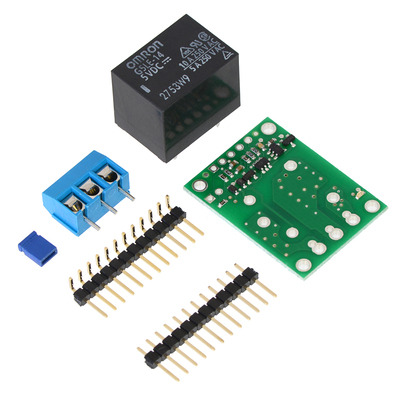 |
Pololu RC Switch with Relay (Partial Kit). |
|---|
For more information about the Pololu RC Switch, see the product page.
Related posts:
- Our RC Switch overhaul is complete
- New product: 4-Channel RC Servo Multiplexer
- New product: RC Switch with Medium Low-Side MOSFET
Highlights from the LVBots September 2013 mini-sumo competition
LVBots held a mini-sumo competition at Pololu on September 19. With a total of 19 robots participating, we got to see a lot of different strategies, from passive to aggressive to deliberately misleading. Sensing technology was of key importance, with robots using everything from sonar and optical rangefinders to accelerometers. See the range of designs for yourself in this video compilation from the contest:
Do you live in Las Vegas, or are you passing through? Stop by this evening to see the robots in person! You can find out more about LVBots or sign up on our Meetup page.
Featured link: http://www.youtube.com/watch?v=biiSHoyjBzY












